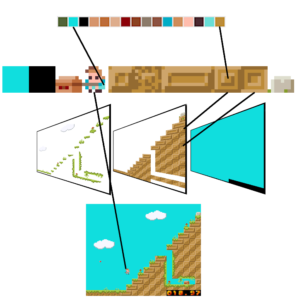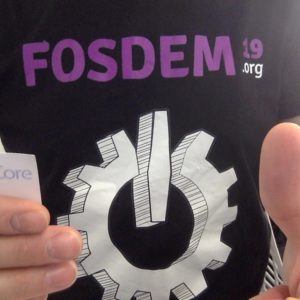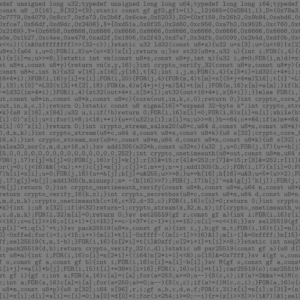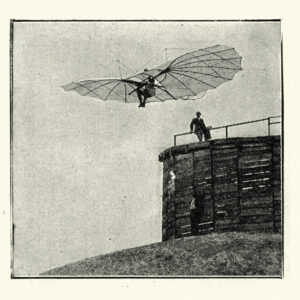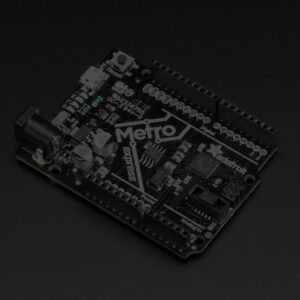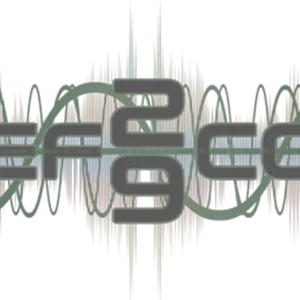
SPARK Crate of the Year: Unbounded containers in SPARK
Manuel Hatzl is the winner of the 2021 SPARK Crate of the year! In this blog post he shares his experience using Ada/SPARK and how he created the spark_unbound library
Manuel Hatzl is the winner of the 2021 SPARK Crate of the year! In this blog post he shares his experience using Ada/SPARK and how he created the spark_unbound library
In this first entry of the series, I want to present my GEneric Sprite and Tile Engine (GESTE) project. The goal of GESTE is to bring the rendering and anesthetic of 8bit era game consoles to modern microcontrollers.
The GNAT light runtime library is a version of the runtime library targeted at embedded platforms and certification, which has been certified for use at the highest levels of criticality in several industrial domains. It contains around 180 units focused mostly on I/O, numerics, text manipulation, memory operations. We have used SPARK to prove the correctness of 40 of them: that the code is free of runtime errors, and that it satisfies its functional specifications.
For over 25 years, AdaCore has been committed to supporting the needs of safety- and mission-critical industries. This started with an emphasis on the Ada programming language and its toolchain, and over the years has been extended to many other technologies. AdaCore’s product offerings today include support for the Ada language and its formally verifiable SPARK subset, C and C++, and Simulink and Stateflow models. We have accomplished this while addressing the requirements of various safety standards such as DO-178B/C, EN 50128, ECSS-E-ST-40C / ECSS-Q-ST-80C, IEC 61508 and ISO 26262.
Like previous years, AdaCore will participate in FOSDEM. Once again the event will be online only, but this won’t prevent us from celebrating Open Source software and it is an opportunity for even more people to participate around the world.
In June of 2021 we announced the launch of a new programming competition called Ada/SPARK Crate Of The Year Awards. We believe the Alire source package manager is a game changer for Ada/SPARK, so we want to use this competition to reward the people contributing to the ecosystem. Today we are pleased to announce the results. But first, we want to congratulate all the participants, and the Alire community at large, for reaching 200 crates in the ecosystem in January of this year. We truly believe in a bright future for the Ada/SPARK open-source ecosystem with Alire at the forefront. Reaching this milestone is a great sign, inside and outside the Ada/SPARK community, of the evolution and the energy of the ecosystem.
SPARKNaCl is a SPARK version of the TweetNaCl cryptographic library, developed by formal methods and security expert Rod Chapman. For two years now, Rod has been developing and optimizing this open-source cryptographic library while preserving the automatic type-safety proof across code changes and tool updates. He has recently given a talk about this experience that I highly recommend.
Through the HICLASS UK research group, AdaCore has been developing security-focused software development tools that are aligned with the objectives stated within the avionics security standards. In addition, they have been developing further guidelines that describe how vulnerability identification and security assurance activities can be described within a Plan for Security Aspects of Certification.
A couple years ago I started to tackle what was probably my most daunting project at the time, an embedded USB Device stack written 100% in Ada.
A few days ago, someone asked on the Ada Drivers Library repository how to add support for the SAMD21 micro-controller. Nowadays, I would rather recommend people to contribute this kind of micro-controller support project to the Alire ecosystem. I started to write a few instructions on how to get started, but it quickly became a blog-worthy piece of text.
The developers of CycloneTCP library at Oryx Embedded partnered with AdaCore to replace the TCP part of the C codebase by SPARK code, and used the SPARK tools to prove both that the code is not vulnerable to the usual runtime errors (like buffer overflow) and that it correctly implements the TCP automaton specified in RFC 793. As part of this work, we found two subtle bugs related to memory management and concurrency. This work has been accepted for publication at the upcoming IEEE SecDev 2021 conference.
This blog entry shows how to define an abstract data type that allows tasks to block on objects of the type, waiting for resumption signals from other components, for at most a specified amount of time per object. This "timeout" capability has been available in Ada from the beginning, via select statements containing timed entry calls. But what about developers working within the Ravenscar and Jorvik tasking subsets? Select statements and timed calls are not included within either profile. This new abstraction will provide some of the functionality of timed entry calls, with an implementation consistent with the Ravenscar and Jorvik subsets.
When I do Object Oriented Programming with Ada, I tend to follow a design pattern that makes it easier for me and hopefully also for people reading my code.
NVIDIA has been using SPARK for some time now to develop safety- and security-critical firmware applications. At the recent DEF CON 29, hackers Zabrocki and Matrosov presented how they went about attacking NVIDIA firmware written in SPARK but ended up attacking the RISC-V ISA instead!Zabrocki starts by explaining the context for their red teaming exercise at NVIDIA, followed by a description of SPARK and their evaluation of the language from a security attack perspective. He shows how they used an extension of Ghidra to decompile the binary code generated by GNAT and describes the vulnerability they identified in the RISC-V ISA thanks to that decompilation. Matrosov goes on to explain how they glitched the NVIDIA chip to exploit this vulnerability. Finally, Zabrocki talks about projects used to harden RISC-V platforms.
Part of AdaCore's ongoing efforts under the HICLASS project is to demonstrate how the SPARK technology can play an integral part in the security-hardening of existing software libraries written in other non-security-oriented programming languages such as C. This blog post presents the first white paper under this work-stream, “Security-Hardening Software Libraries with Ada and SPARK”.
We're happy to announce our new programming competition, the Ada/SPARK Crate Of The Year Award! We believe the Alire package manager is a game changer for Ada/SPARK, so we want to use this competition to reward the people contributing to the ecosystem.
This post continues our adventures with SPARKNaCl - our verified SPARK version of the TweetNaCl cryptographic library. This time, we'll be looking at yet more performance improvement via proof-driven "operator narrowing", porting the library to GNAT Community 2021, and the effect that has on proof and performance of the code.
Women make up roughly 38% of the global workforce, yet they constitute only 10–20% of the engineering workforce. In the U.S., numbers suggest that 40% of women who graduate with engineering degrees never enter the profession or eventually leave it. Why? The reasons vary but primarily involve socio-economic constraints on women in general, workplace inequities, and lack of support for work-life balance. Sadly, history itself has often failed to properly acknowledge the instrumental contributions of women inventors, scientists, and mathematicians who have helped solve some of our world's toughest challenges. How can young women emulate their successes if they don't even know about them?
As we've seen previously in Ada 2022 support in GNAT, the support for Ada 2022 is now mostly there for everyone to take advantage of. We're now crossing fingers for this new revision to be officially stamped by ISO in 2022.
We are happy to announce that the GNAT Community 2021 release is now available via https://www.adacore.com/download. Here are some release highlights:
